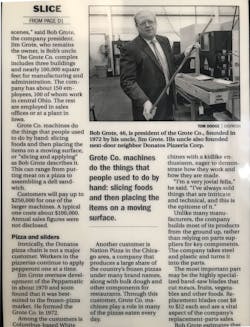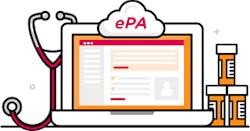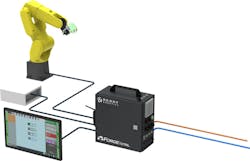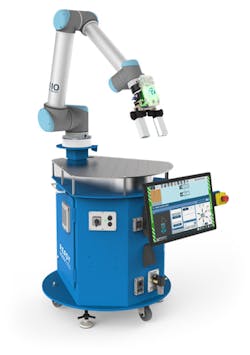In part 1 I introduced the companies, educators, and research facilities I visited during my stay in Columbus, Ohio, along with a recap of my visit to Pillar Technology. In part 2 I meet with JE Grote, CoverMyMeds, and Ready Robotics.
JE Grote Company
A family-owned and operated manufacturer of food processing equipment, JE Grote built its corporate headquarters in the Columbus Region in 1982. Since then, the company has become a leading manufacturer of slicing and food assembly equipment globally. If you’ve eaten anything that came pre-sliced or simply walking down the aisle at the grocery stores, you’ve probably seen the work of this company.
Bob Grote
“While I strongly believe our equipment is the best in the industry, that’s not the only thing that sets us apart,” says CEO Bob Grote. “I’m so proud of our personal touch and enduring commitment to our customers and employees. When you call, we pick up the phone or come out to see you face-to-face. No automated runaround—just good old-fashioned business. This is how we began so many years ago and how we will continue to do business long into the future.”
Like many manufacturing executives, Grote is concerned with the impact of the skills gap on his company’s operations. “We’ve never stopped growing—a few times growth slowed, but we’ve never stopped,” he notes. “I have machines on the floor that are idle because I can’t get enough machinists to run and program them.” he notes.
Nation Pizza in the Chicago area uses JE Grote’s machines to make a large share of the country’s frozen pizzas.
CoverMyMeds
With my next stop at a healthcare software company, one can see the diversity in Columbus’ business environment. CoverMyMeds creates software to automate the prior authorization process used by some U.S. health insurance companies. Founded in 2008, CoverMyMeds became Columbus’ first unicorn (privately held startup valued over $1 billion) after being acquired by McKesson in January 2017.
Its mission is to help patients get the medication they need to live healthy lives, and according to a counter on its website, CoverMyMeds have done that 141,490,853 times. However, after I refreshed the page it added 2,506 to its total. America is heavily medicated, and our healthcare is known for being expensive and needlessly complex.
- According to research from Mayo Clinic in 2013, nearly seven in 10 Americans take at least one prescription drug. Prescription drugs have steadily increased over the last 10 years, and now 20% of Americans are on five or more medications.
- In a survey of 1,947 adults Consumer Reports published in 2017, more than half were taking four medications.
For more information on this topic, check out the CDC website. With so many drugs being prescribed in a complex and often convoluted industry, it is no wonder why CoverMyMeds has seen such great success.
By automating the prior authorization process used by some U.S. health insurance companies, CoverMyMeds built a startup worth more than $1 billion within 10 years.
Columbus has business in diversity in industry and size. People from outside Ohio, like myself, might not picture an industrious city with diverse startups doting the landscape, but again, the local schools are generating a high concentration of talent. My second company I met with that didn’t have a concern for the Skills Gap might also be due to their technology. Ready Robotics is making robotic cells so anyone can have advanced automation on the shop floor, even with no experience.
Ready Robotics
“Columbus has a ton of schools, so the talent concentration is high. I think this area also does a great job keeping graduates here,” says Ready Robotics CEO and co-founder Benjamin Gibbs. Ready Robotics is a developer and supplier of automation solutions. It moved its headquarters from Baltimore to the Columbus Region in Dec. 2018. Ready Robotics is a robotics-as-a-service (RaaS) company and closed a $15 million funding round led by Columbus-based Drive Capital in late 2017.
Walking into the factory, the lobby wall was covered in street art. The tall, stylish, young-looking Gibbs greeted me. Not looking like many of the engineers-turned-CEOs I’ve seen in other robotics startups, I asked, “What’s your background?”
“Business. Don’t worry, if I can’t answer your technical questions, I can find someone that can.”
During the tour, Gibbs didn’t disappoint. He might be from business, but the company was developing technology for people with minimal to no experience. To prove this, Gibbs took about five minutes to show me how to setup a robotic cell. Making some connection of pneumatics and power to the base a collaborative robot was sitting, Gibbs set up the cell to grab a part, load it into a lathe, start the lathe operation, and unload the part.
Ready Robotics created a cell that can be easily integrated with almost any robotic arm, end-effector, and other systems to create a plug-and-play robotic work cell that anyone can program.
This might seem basic, but applications like this can free workers from being interrupted from more important or complex tasks. Also, a cell like this could do many things, so as the factory floor changes the cell can change. With the easy-to-program pick-and-place programming on many collaborative robots, and the block programming anyone should be able to change or add tasks to the cell.
Not associated with Ready Robotics, MIT released Scratch. It is block programming to teach kids how to code. However, it was so popular it wasn’t long until I ran into an ABB engineer that had used it to program an industrial robotic arm. This is the same concept used by Ready Robotics. You can create blocks to perform an action, such as open/close gripper. Then, like building blocks, you select and drag the block you’ve created into a visual stack of blocks. The lathe demonstration took less than a dozen blocks, all of which were selected from a premade library of blocks.
With flowchart logic, block programming, and a collaborative robot’s ability to simplify the robotics’ arm programming, the robotic cell seems only limited by what end-effector you select and the reach of the arm. While impressive, one of the simplest smallest things was almost passed over. While Gibbs was setting up the demo, he casually connects a pneumatic device to operate the HMI.
The Forge Station R10 has a reach of 51.2 in., a payload of 22 lb, and a speed of 39.4 in. per second.
It was simple and brilliant. Often when people are programming robots a human will still interact with the HMI. For example, the robotic cell could load and unload the lathe, but a human might still be pushing the buttons on the HMI to open and close the lathe’s chuck. This could leave a machine waiting on a human to push a button before continuing to the next step.
Some solutions will have the robot start the machine but, in the case of operating a chuck, the robot can’t hold a part and push buttons on the HMI. Additionally, pushing buttons might not be easy depending on the geometry or the end-effector and the button size and configuration on the HMI. Finally, collaborative robots are regulated to how fast they can move. Using the robot to operate the HMI will increase cycle times.
Ready Robotics’ solution was to make a small pneumatic button pusher that can plug into the robotic cell and be clamped mechanically or magnetically to an HMI. Since this tour I’ve seen other button pushers but, like most of the convenience of a robotic cell, this puts everything on one platform for faster integration and easier operation.
It is simple, additional features like these that tell me if a company either has the experience or has done its research to make an effective product. For JE Grote it was years of hands-on experience. CoverMyMeds and Ready Robotics are newer companies, but their competency to produce an effective product shows the depth and skills of the talent pool in Columbus.
In part 4 I’ll talk more about what local educators are doing to support the people to amplify the success of the city. Next, in part 3, I talk to researchers at The Ohio State’s Center for Automotive Research (CAR) and the Transportation Research Center (TRC).






